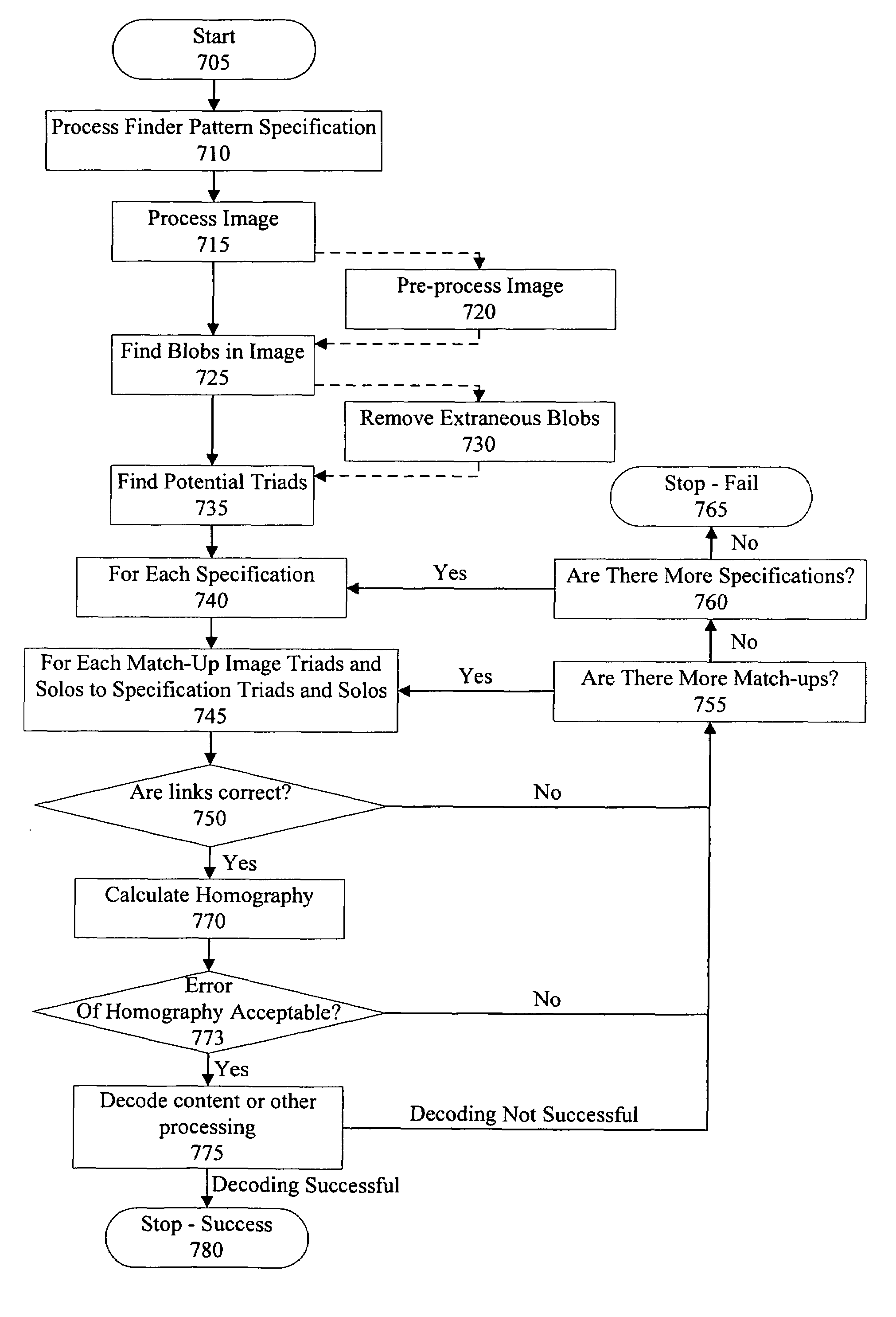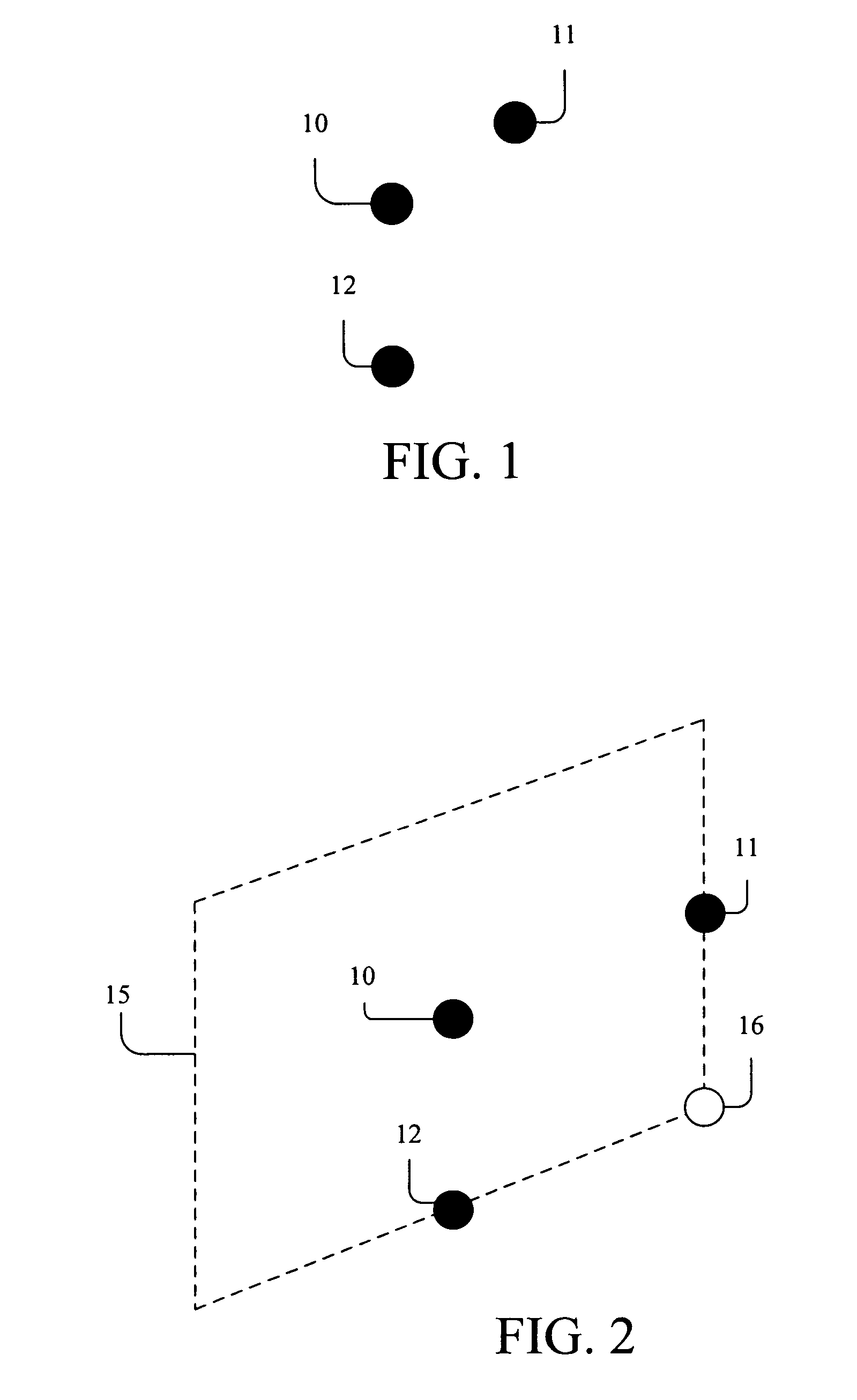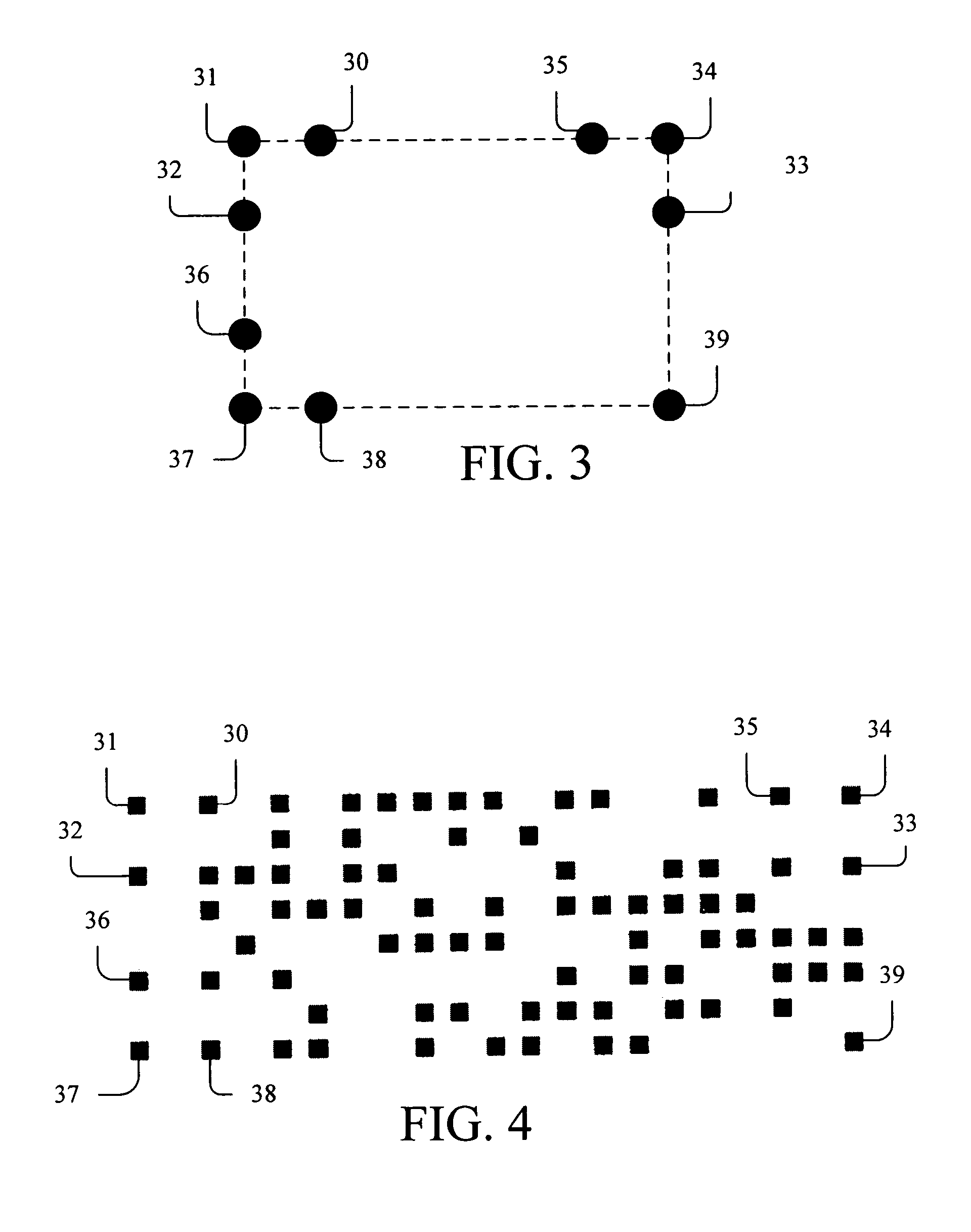Efficient finder patterns and methods for application to 2D machine vision problems
a machine vision and efficient technology, applied in the field offinder patterns, can solve the problems of poor data density, additional algorithmic complexity, and limited data amount of one-dimensional barcodes, and achieve the effects of low surface area use, easy location, and direct correction of perspectiv
- Summary
- Abstract
- Description
- Claims
- Application Information
AI Technical Summary
Benefits of technology
Problems solved by technology
Method used
Image
Examples
Embodiment Construction
[0041]In a typical application of this invention, an image is captured by a camera device of some two dimensional (planar or near-planar) object. In the preferred embodiment, a camera is an ordinary optical sensor device that produces an array of digital information in the memory of some computational device. It should be obvious that any sensing device capable of producing a two dimensional image, such as a range sensor, short range radar, document scanner or other apparatus can also be a suitable “camera”.
[0042]A target object may be something as simple as a pattern of information printed in black ink on white paper (like the machine readable codes discussed earlier) that is sensed via ambient light by the camera. Alternatively it may be a complex pattern of colors or variations in the target surface such as a texture or deliberate deformations like Braille illuminated by light, sound, or other form of radiation from a specialized source with specific characteristics. It is also p...
PUM
 Login to View More
Login to View More Abstract
Description
Claims
Application Information
 Login to View More
Login to View More - R&D
- Intellectual Property
- Life Sciences
- Materials
- Tech Scout
- Unparalleled Data Quality
- Higher Quality Content
- 60% Fewer Hallucinations
Browse by: Latest US Patents, China's latest patents, Technical Efficacy Thesaurus, Application Domain, Technology Topic, Popular Technical Reports.
© 2025 PatSnap. All rights reserved.Legal|Privacy policy|Modern Slavery Act Transparency Statement|Sitemap|About US| Contact US: help@patsnap.com



